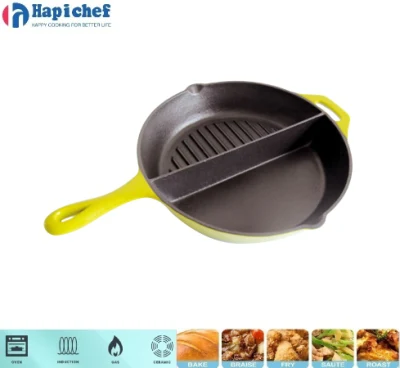Using a Cast Iron Pan in the Oven for Perfectly Seasoned Dishes
The Art of Seasoning a Cast Iron Pan in the Oven
A cast iron pan is an indispensable tool in many kitchens due to its unparalleled heat retention, versatility, and durability. However, to truly harness the power of a cast iron skillet, proper seasoning is essential. Seasoning not only enhances the flavor of food but also creates a non-stick surface and protects the pan from rust. One effective method to season a cast iron pan is in the oven, and in this article, we will explore the step-by-step process, benefits, and some tips to ensure your skillet remains in prime condition.
What is Seasoning?
Seasoning is the process of treating the surface of a cast iron pan with oil and baking it to create a protective layer. This layer is a polymerized oil that forms a hard coating, preventing food from sticking and minimizing the interaction of moisture with the iron, which can lead to rust. Regular seasoning makes the pan more non-stick with each use, resulting in improved cooking performance over time.
Why Season in the Oven?
Seasoning cast iron in the oven ensures even heat distribution, which is crucial for the polymerization of the oil. Baking the pan at a high temperature allows the oil to bond to the iron more effectively, creating a durable surface. Additionally, using the oven is generally more efficient for seasoning multiple pans at once compared to stovetop methods.
Step-by-Step Guide to Seasoning Your Cast Iron Pan in the Oven
1. Clean the Pan Start with a clean surface. If your cast iron pan is new, wash it with warm water and mild soap. If it’s used and has remnants of old seasoning or rust, scrub it with steel wool until the surface is smooth. Rinse and dry the pan thoroughly, as moisture can interfere with the seasoning process.
2. Apply Oil Choose a high-smoke point oil for seasoning, such as flaxseed oil, canola oil, or vegetable oil. Using a paper towel or cloth, apply a thin layer of oil all over the pan's interior and exterior, including the handle. It’s crucial to avoid using too much oil, as excess can lead to a sticky finish.
season cast iron pan in oven

3. Wipe Off Excess After applying the oil, take a clean paper towel and wipe off any excess. The surface should appear shiny but not greasy. The thinner the layer of oil, the better the seasoning will turn out.
4. Preheat the Oven Preheat your oven to 450°F (232°C). This temperature allows the oil to reach its smoke point, which is essential for the polymerization process.
5. Bake the Pan Once preheated, place the cast iron pan upside down on the middle rack of the oven. Placing it upside down allows any excess oil that may drip during baking to fall away, preventing pooling inside the pan. To catch any drips, you can place a baking sheet or foil on the bottom rack.
6. Bake for an Hour Let the pan bake for about an hour. This duration ensures that the oil bonds thoroughly with the iron. After an hour, turn off the oven but leave the pan inside to cool down gradually. This helps in forming a stronger seasoning layer.
Tips for Maintaining Your Cast Iron Pan
- Regular Cooking Use your cast iron skillet frequently. Cooking with it helps build and maintain seasoning over time, particularly when using fatty foods like bacon or oil-rich vegetables. - Avoid Soaking Never soak your cast iron pan in water, as prolonged exposure can lead to rust. If cleaning is necessary, use minimal water and dry it promptly.
- Re-seasoning Depending on usage, you may need to re-season your pan every few months or when you notice food sticking or a dull surface. Simply follow the steps outlined above.
Conclusion
Seasoning your cast iron pan in the oven is a straightforward yet vital process that ensures your skillet remains functional and effective. Not only does proper seasoning help in achieving a natural non-stick surface, but it also enhances the flavors of your food, making every meal memorable. With just a little time and effort, you can maintain your cast iron cookware to last for generations, becoming a cherished possession in your kitchen arsenal. So, roll up your sleeves, follow the steps, and enjoy the delicious results that a well-seasoned cast iron pan can provide.
-
The Ultimate Guide to Cast Iron Deep Dish Pizza PerfectionNewsMay.21,2025
-
The Essential Guide to Cast Iron Casserole Cookware for Every KitchenNewsMay.21,2025
-
Take Outdoor Cooking to the Next Level with Cast Iron GriddlesNewsMay.21,2025
-
Outdoor BBQ Season Is Here—One Stainless Steel Camping Stove Is All You NeedNewsMay.21,2025
-
Elevate Your Outdoor Cooking Experience: The Power of Cast Iron Dutch OvensNewsMay.21,2025
-
The Ultimate Guide to Cooking with a Cast Iron Divided Breakfast SkilletNewsMay.21,2025
-
The Material Excellence of Hapichef’s Enameled Cast Iron BakewareNewsMay.19,2025
